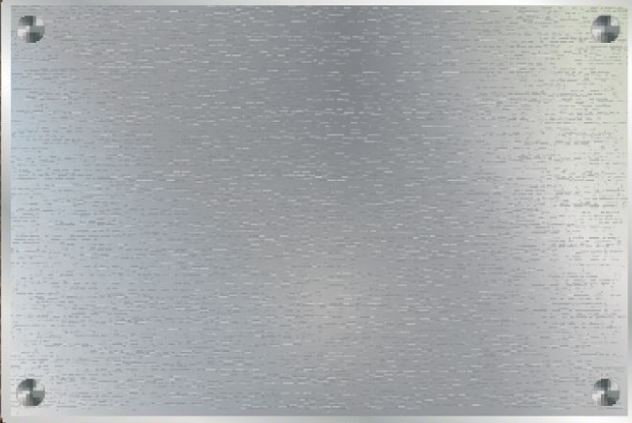
Straight line drawing refers to processing a straight line on the surface of the aluminum plate by mechanical friction. It has the dual function of removing scratches on the surface of the aluminum plate and decorating the surface of the aluminum plate. There are two types of linear drawing: continuous drawing and intermittent drawing. Use a cleaning cloth or a stainless steel brush to continuously and horizontally rub the surface of the aluminum plate (such as manual grinding under equipment conditions or grinding on the aluminum plate with a planer clamped with a wire brush) to obtain a continuous silk screen pattern. By changing the steel wire diameter of the stainless steel brush, steel wires of different thicknesses can be obtained. Intermittent screen printing is usually performed on a brush machine or a rubbing machine. Manufacturing principle: Two sets of differential wheels rotating in the same direction are adopted. The upper group is a fast-turning grinding roller, and the lower group is a slow-turning rubber roller. The aluminum plate or aluminum alloy plate is brushed into small intermittent straight lines through two sets of rollers.
Disordered wire drawing is an irregular and inconspicuous matte wire obtained by moving the aluminum plate back and forth under the action of a high-speed copper wire brush. This processing has higher requirements on the surface of aluminum or aluminum alloy plates.

Crinkling is usually carried out on a brush machine or a stripe machine. Use the axial movement of the last set of grinding rollers to polish the surface of the aluminum plate or aluminum alloy plate to obtain a waveform.
Rotating pattern, also known as rotatory pattern, is a linear pattern obtained by mixing kerosene and polishing paste on a cylindrical felt or stone nylon wheel installed on a drilling machine, rotating and polishing the surface of an aluminum or aluminum alloy plate. Mainly used for decorative processing of round signs and small decorative dials.
The line is a small motor with a round felt on the shaft, which is fixed on the table at an angle of about 60 degrees with the edge of the worktable. In addition, a fixed aluminum plate pressing tea cart was also made. Paste polyester film on the frame to limit yarn competition. Using the rotation of the felt and the linear movement of the trolley, lines of equal width are carved on the surface of the aluminum plate.
Sandblasting is to obtain a surface decorated with a film or a surface with good reflectivity to meet special design requirements such as soft gloss. Even and moderate sandblasting can basically overcome the common defects of aluminum surface.
External parts, whether drawn or sandblasted, usually undergo surface oxidation treatment. When selecting the processing technology, the shape-related issues should be considered. These two processes can obtain surface texture or difference.
In addition, there is a process similar to sand blasting, but its corrosion method is chemical corrosion, commonly known as rot sand chemical treatment or chemical sand surface corrosion, which is especially suitable for aluminum surface treatment, and its sand surface uniformity is far better than sand blasting. The surface corrosion of chemical sand is divided into acid corrosion and alkaline corrosion. Use different corrosive solvents and sanding agents to obtain different surface colors and particle sizes.